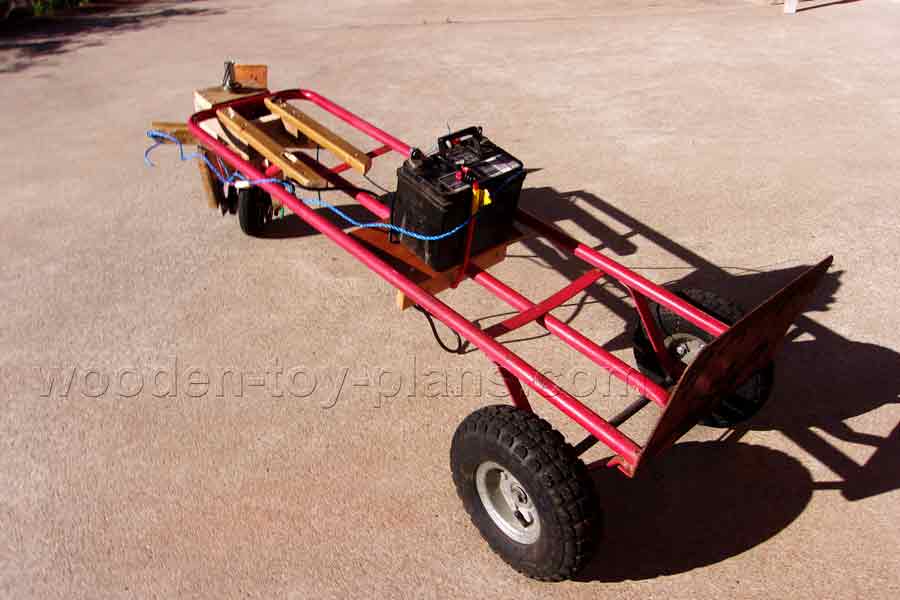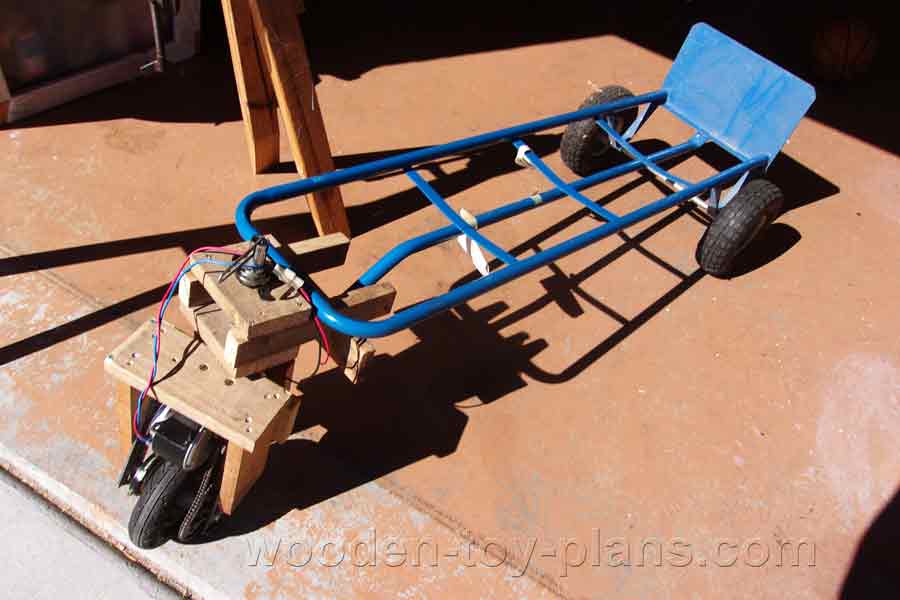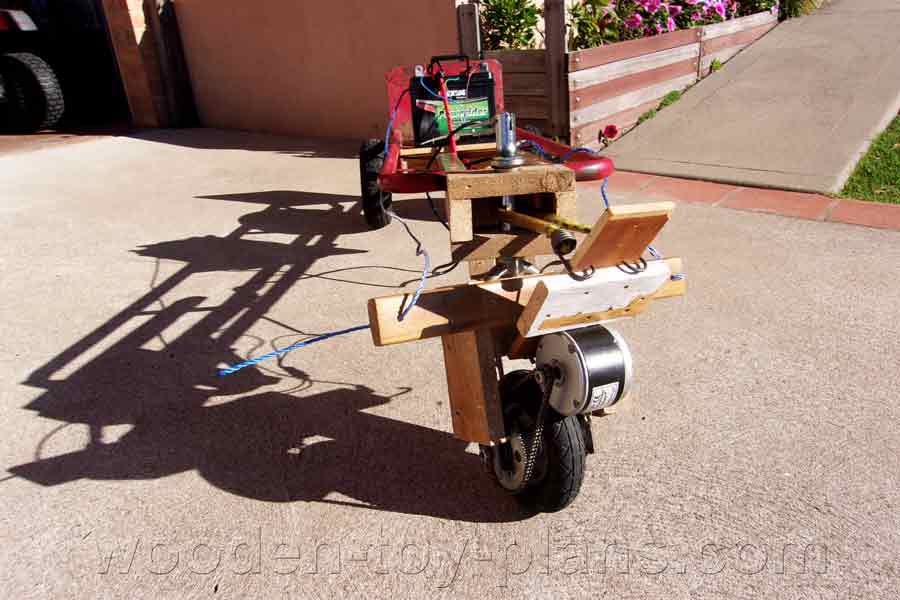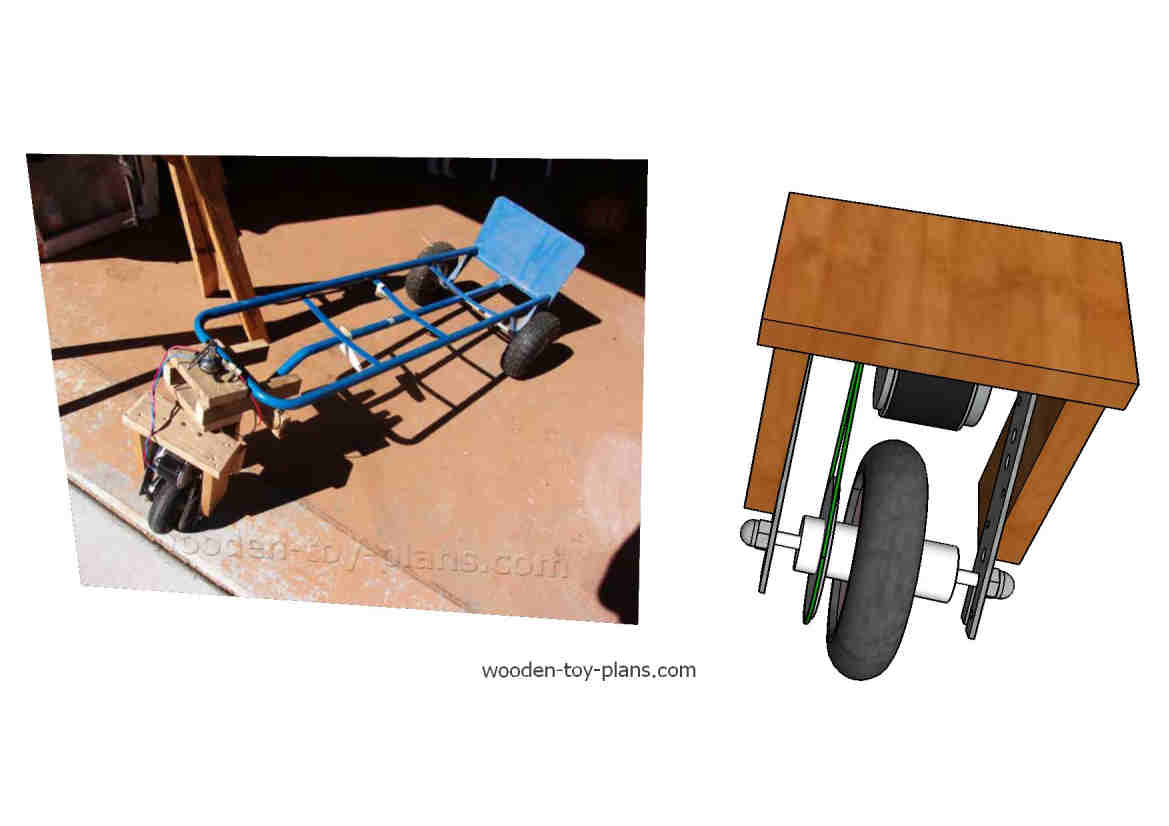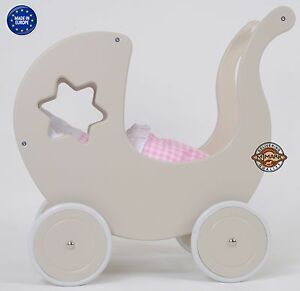DIY Electric Scooter
All about my DIY electric scooter proof of concept using a furniture trolley as a test bed.
This experiment is more about the mechanics involved with making a single wheel steerable drive unit.
Lets be generous and say that it is the early stages of development starting with zero budget.
I have always been interested in anything with wheels.
One day, I was lucky enough to rescue two electric scooters from a place known locally as the transfer station, aka the rubbish tip. My favourite place to go shopping. As they say, one man’s rubbish is another man’s gold.
Alas, the local authorities don’t exactly share my enthusiasm, so they have made it harder to go shopping there.
Needless to say, both electric scooters were beyond repair, so I salvaged the motors and the wheels. The left over pieces were returned for no refund.
Both motors are 24 volt DC rated at 200kw, with speeds of 2500 rpm and 2750 rpm. A tad fast, I thought, then realised it is no load speed. According to my research these electric motor are capable of speeds up to 15 kph for a person who weighs no more than 70kg.
The fact is that I do weigh a bit more than that, so why not use two motors instead of just one? The fact is this design is a stand alone drive unit, and I could make two, so in theory, that would double the weight carrying ability. More on that later, perhaps.
My first attempt at making a scooter did not work well enough, so the project was shelved for a while.
A Bright Idea
A few months later, looking for a new project, I realised that I actually do have all the ingredients necessary to make a scooter.
I could always buy a set of wheels from the big green shed, but why would I when I have access to not one but two pairs of wheels from two of the furniture trolleys that I have here.
The photo shows the drive unit mounted on the furniture trolley. I have also used the front steering fork from the salvaged electric scooter, which is hidden under all the wooden parts.
Anything with wheels is fair game, and the plan has always been to borrow the wheels off the furniture trolley. Why not use the whole furniture trolley? It already has the appearance of a scooter if it lies down, and all I need to do is mount a third wheel on the front.
It did work, but the chain would slip off under power. The reason I thought was because of tension under power would pull the sprocket out of alignment.
So it was back to the drawing board.
DIY Electric Scooter Mk2
Here I have mounted the electric motor on a hinge, and used a bungee cord to keep a constant tension on the chain. The electric motor is mounted on a hinged platform so that under power it would not pull the sprockets out of alignment. That’s my theory, anyway, and it does seem to work.
Also made a different kind of steering, the tried and trusty rope on a crossbar, which also serves as a footrest.
I made a Sketchup model of the Mk1 homemade DIY electric scooter.
The link opens SketchUp for web, and you can view and save the model.
More Homemade DIY electric scooters
Step by step instructions on how to build a homemade Electric scooter using a second hand scooter. Plans to build a DIY Electric scooter from buggies built for fun.How to turn your hobby into a profitable business.
Solo Build It! (SBI!) is an online platform that empowers solopreneurs to build profitable online businesses. For over two decades, SBI! has been trusted by members to turn their passions, hobbies, or skills into successful ventures. Recently, the introduction of ChatGPT has ushered in a new era of AI-assisted content creation within SBI!.
Allow me to introduce you to Tai, your business-building AI assistant. Tai is now available in SBI! and can help you navigate the world of online entrepreneurship. Whether you’re a complete beginner or an experienced solopreneur, SBI! provides everything you need to create an income-generating website or blog.
Here are some reasons why starting an online business with SBI! and Tai is a great choice:
- Adaptable Lifestyle: Building an online business adapts to your desired lifestyle. Enjoy newfound freedom without being tied down to another job.
- Low Startup Costs: You don’t need significant capital to begin. All you require is a computer, internet access, a roadmap, and an affordable platform like SBI!.
- Flexibility: Work as much or as little as you want, wherever you choose. Once you’ve built a solid foundation, you can earn money even on days you don’t actively work.
- Portability: Take your business with you, especially if travel is part of your retirement dream.
- Global Impact: Help people worldwide by sharing your knowledge and expertise.
- Continuous Learning: Running an online business keeps your mind active and energized.
SBI! combines education, tools, and a proven process to give you the highest chance of achieving your financial goals. Whether you’re aiming for financial independence or simply want a rewarding project during retirement, SBI! can guide you.
If any of this resonates with you, I invite you to explore SBI! and discover how it can help you build your online retirement business. Even if you’re a beginner, SBI! provides the resources you need to succeed. Say hello to Tai and embark on your entrepreneurial journey! 🚀
Learn more and try Tai for free on the Solo Build It! website.
